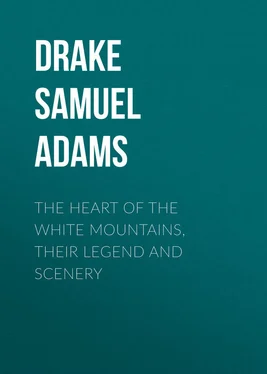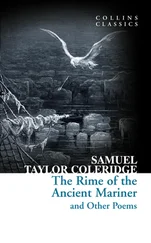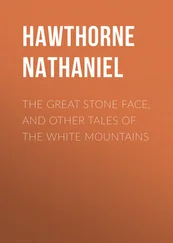Samuel Drake - The Heart of the White Mountains, Their Legend and Scenery
Здесь есть возможность читать онлайн «Samuel Drake - The Heart of the White Mountains, Their Legend and Scenery» — ознакомительный отрывок электронной книги совершенно бесплатно, а после прочтения отрывка купить полную версию. В некоторых случаях можно слушать аудио, скачать через торрент в формате fb2 и присутствует краткое содержание. Жанр: foreign_antique, foreign_prose, на английском языке. Описание произведения, (предисловие) а так же отзывы посетителей доступны на портале библиотеки ЛибКат.
- Название:The Heart of the White Mountains, Their Legend and Scenery
- Автор:
- Жанр:
- Год:неизвестен
- ISBN:нет данных
- Рейтинг книги:4 / 5. Голосов: 1
-
Избранное:Добавить в избранное
- Отзывы:
-
Ваша оценка:
- 80
- 1
- 2
- 3
- 4
- 5
The Heart of the White Mountains, Their Legend and Scenery: краткое содержание, описание и аннотация
Предлагаем к чтению аннотацию, описание, краткое содержание или предисловие (зависит от того, что написал сам автор книги «The Heart of the White Mountains, Their Legend and Scenery»). Если вы не нашли необходимую информацию о книге — напишите в комментариях, мы постараемся отыскать её.
The Heart of the White Mountains, Their Legend and Scenery — читать онлайн ознакомительный отрывок
Ниже представлен текст книги, разбитый по страницам. Система сохранения места последней прочитанной страницы, позволяет с удобством читать онлайн бесплатно книгу «The Heart of the White Mountains, Their Legend and Scenery», без необходимости каждый раз заново искать на чём Вы остановились. Поставьте закладку, и сможете в любой момент перейти на страницу, на которой закончили чтение.
Интервал:
Закладка:
The cold was intense, the wind piercing. On its north side the house was deeply incrusted with ice-spars – windows and all. I feel that only scant justice can be done to their wondrous beauty. All the scrubby bushes growing out of interstices of the crumbling summit – wee twig and slender filament – were stemmed with ice; while the rocks bristled with countless frost feathers. With my pitch-cakes and a few twigs I lighted a fire, which might be seen from the half-dozen villages clustered about the foot of the mountain, and pleased myself with imagining the astonishment with which a smoke curling upward from this peak would be greeted for fifty miles around. I then prepared to descend – I say prepared to descend, for the thing at once so easy to say and so difficult of performance suddenly revived the recollection of the hazardous scramble up the ledges, and made it seem child’s play by comparison. For a brief hour I had forgotten all this. However, go down I must. But how? The first step on the ice threatened a descent more rapid than flesh and blood could calmly contemplate. I had no hatchet to cut steps in the ice; no rope to attach to the rocks, and thus lower myself, as is practised in crossing the glaciers of the Alps; and there was no foothold. For a moment I seriously thought of forcing an entrance into the house, and, making a signal of distress, resign myself to the possibility of help from below. But while sitting on a rock looking blankly at the glassy declivity stretching down from the summit, a bright idea came to my aid. I remembered having read in Bourrienne’s “Memoirs” that Bonaparte – the great Bonaparte – was forced to slide down the summit of the Great St. Bernard seated , while making his famous passage of the Alps. Yes, the great Corsican really advanced to the conquest of Italy in this undignified posture. But never did great example find more unworthy imitator. Seating myself, as the Little Corporal had done, using my staff as a rudder, and steering for protruding stones in order to check the force of the descent from time to time, I slid down with a celerity the very remembrance of which makes my head swim, arriving safe, but breathless and much astonished, at the first irregular patch of snow. The pleasure of standing erect on something the feet could grasp was one not to be translated into words.
VI.
FROM KEARSARGE TO CARRIGAIN
Raleigh. – “Fain would I climb, but that I fear to fall.”
Queen Elizabeth. – “If thy heart fail thee, climb thou not at all.”
AFTER the storm, we had a fine lunar bow. The corona in the centre was a clear silver, the outer circle composed of pale green and orange fires. Over the moon’s disk clouds swept a continuous stormy flight. The great planet resembled a splendid decoration hung high in the heavens.
Having now progressed to terms of easy familiarity with the village, it was decided to pay our respects to the Intervale, which unites it with the neighboring town of Bartlett.
The road up the valley first skirts a wood, and through this wood are delicious glimpses of Mount Adams. During the heat of the day or cool of the evening this extensive and beautiful forest has always been a favorite haunt. Tall, athletic pines, that bend in the breeze like whalebone, lift their immense clusters of impenetrable foliage on high. The sighs of lovers are softly echoed in their green tops; voices and laughter issue from it. We, too, will swing our hammock here, and breathe the healing fragrance that is so grateful.
In a little enclosure of rough stone, on the Bigelow place, lie the remains of the ill-fated Willey family, who were destroyed by the memorable slide of 1826. The inscription closes with this not too lucid figure:
“We gaze around, we read their monument;
We sigh, and when we sigh we sink.”
Where the high terrace, making one grand sweep to the right, again unveils the same superb view of the great summits, now wholly unobstructed by houses or groves, we halt before that picture, unrivalled in these mountains, not surpassed, perhaps, upon earth, and which we never tire of gazing upon. Its most salient features have already been described; but here in their very midst, from their very heart, nature seems to have snatched a garden-spot from the haggard mountains arrested in their advance by the command, “Thus far, and no farther!” The elms, all grace, all refinement of form, bend before the fierce blasts of winter, but stir not. The frozen east wind flies shrieking through, as if to tear them limb from limb. The ground is littered with their branches. They bow meekly before its rage, but stir not. Really, they seem so many sentinels jealously guarding that repose of which the vale is so eloquently the expression. The vale regards the stormy summits around with the unconcern of perfect security. It is rest to look at it.
Again we scan the great peaks which in clear days come boldly down and stand at our very doors, but on hazy ones remove to a vast distance, keeping vaguely aloof day in and day out. Sometimes they are in the sulks, sometimes bold and forward. By turns they are graciously condescending, or tantalizingly incomprehensible. One time they muffle themselves in clouds from head to foot, so we cannot detect a suggestive line or a contour; another, throwing off all disguise, they expose their most secret beauties to the free gaze of the multitude. This is to set the beholder’s blood on fire with the passion to climb as high as those gray shafts of everlasting rock that so proudly survey the creeping leagues beneath them.
Nowhere is the unapproachable grandeur of Mount Washington more fully manifested than here. This large and impressive view is at once suggestive of that glorious pre-eminence always associated with high mountains. There are mountains, respectable ones too, in the middle distance; but over these the great peak lords it with undisputed sway. The bold and firm, though gradual, lines of ascent culminating at the apex, extend over leagues of sky. After a clear sunset, Mount Washington takes the same dull lead-color of the clouds hovering like enormous night-birds over its head.
North Conway permits, to the tourist, a choice of two very agreeable excursions, either of which may be made in a day, although they could profitably occupy a week. One is to follow the course of the Saco, through the great Notch, to Fabyans, where you are on the westward side of the great range, and where you take the rail to the summit of Mount Washington. The other excursion is to diverge from the Saco Valley three or four miles from North Conway, ascending the valley of Ellis River – one of the lame affluents of the Saco – through the Pinkham Notch to the Glen House, where you are exactly under the eastern foot of Mount Washington, and may ascend it, by the carriage-road, in a coach-and-four. We had already chosen the first route, and as soon as the roads were a little settled we began our march.
The storm was over. The keen north wind drove the mists in utter rout before it. Peak after peak started out of the clouds, glowered on us a moment, and then muffled his enormous head in fleecy vapor. The clouds seemed thronged with monstrous apparitions, struggling fiercely with the gale, which in pure wantonness tore aside the magic drapery that rendered them invisible, scattering its tattered rags far and wide over the valley.
Now the sun entered upon the work begun by the wind. Quicker than thought, a ray of liquid flame transfixed the vapors, flashed upon the vale, and, flying from summit to summit, kindled them with newborn splendor. One would have said a flaming javelin, hurled from high heaven, had just cleft its dazzling way to earth. The mists slunk away and hid themselves. The valley was inundated with golden light. Even the dark faces of the cliffs brightened and beamed upon the vale, where the bronzed foliage fluttered, and the river leaped for joy. In a little time nothing was left but scattered clouds winging their way toward the lowlands.
Читать дальшеИнтервал:
Закладка:
Похожие книги на «The Heart of the White Mountains, Their Legend and Scenery»
Представляем Вашему вниманию похожие книги на «The Heart of the White Mountains, Their Legend and Scenery» списком для выбора. Мы отобрали схожую по названию и смыслу литературу в надежде предоставить читателям больше вариантов отыскать новые, интересные, ещё непрочитанные произведения.
Обсуждение, отзывы о книге «The Heart of the White Mountains, Their Legend and Scenery» и просто собственные мнения читателей. Оставьте ваши комментарии, напишите, что Вы думаете о произведении, его смысле или главных героях. Укажите что конкретно понравилось, а что нет, и почему Вы так считаете.












